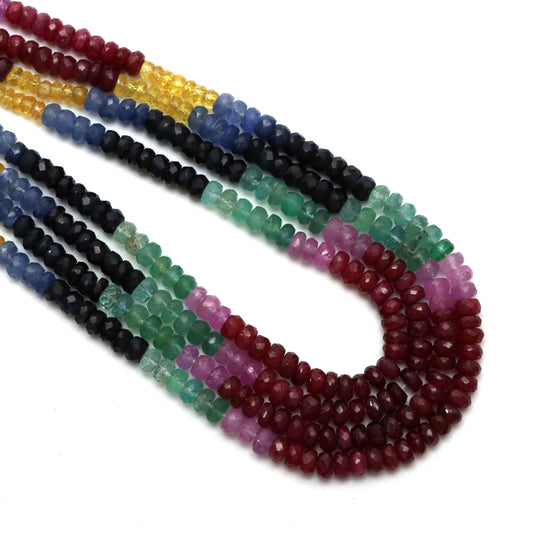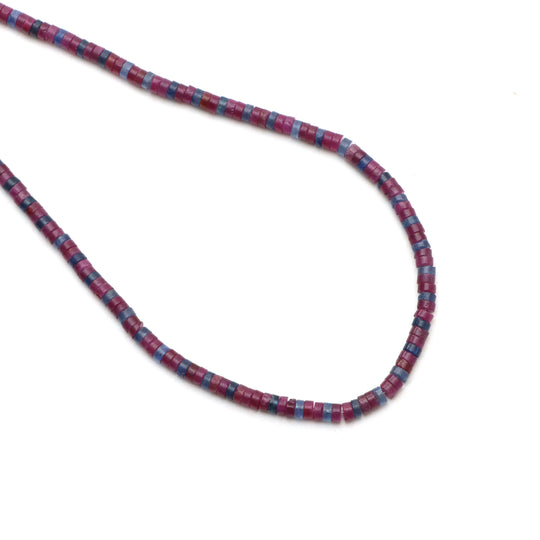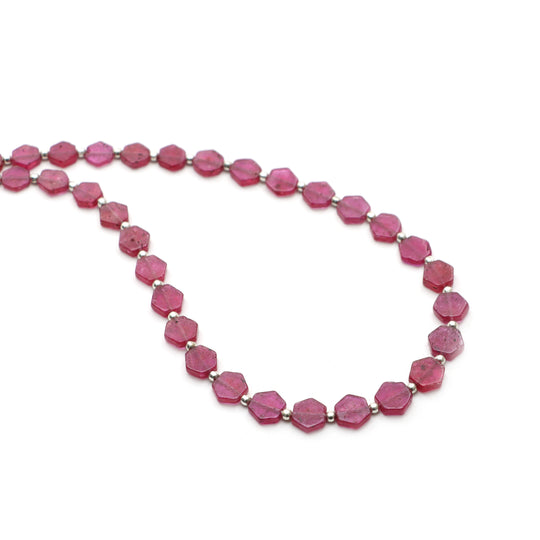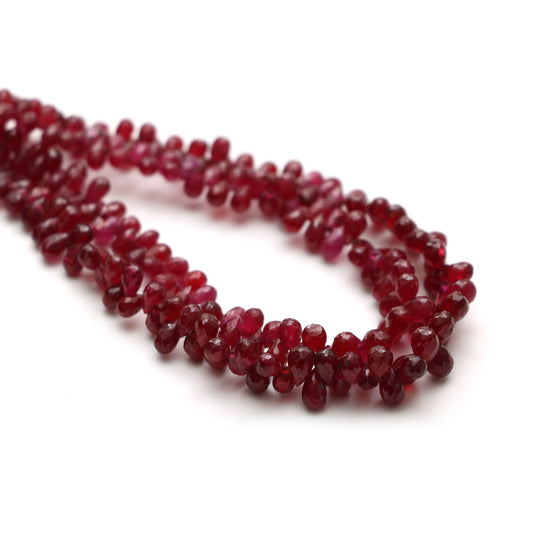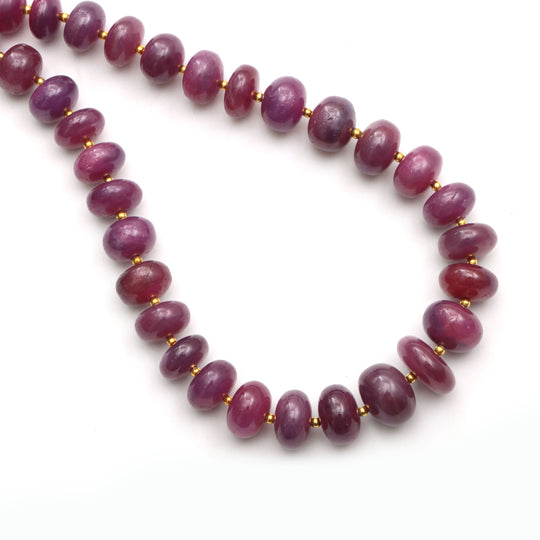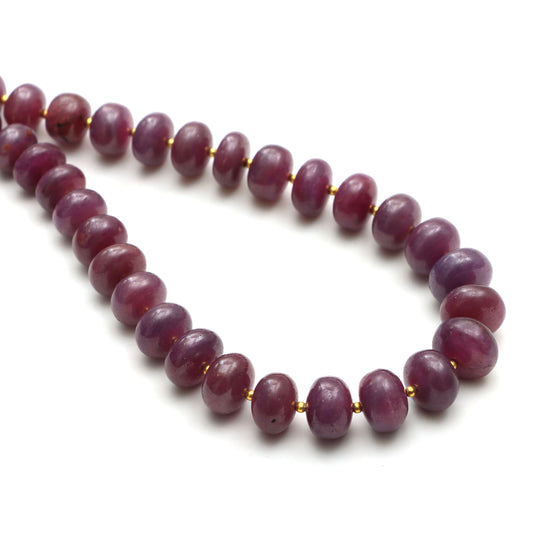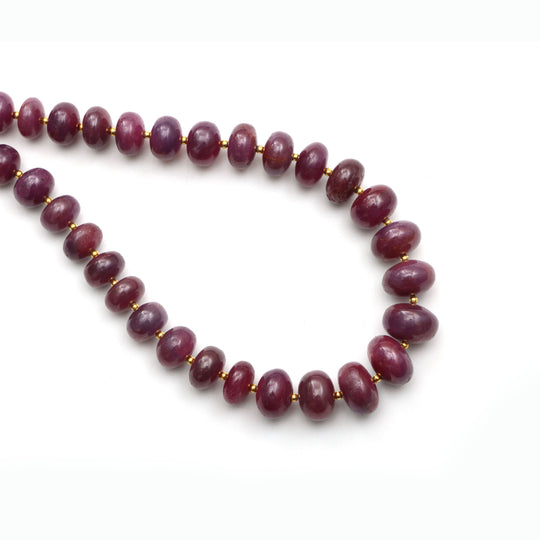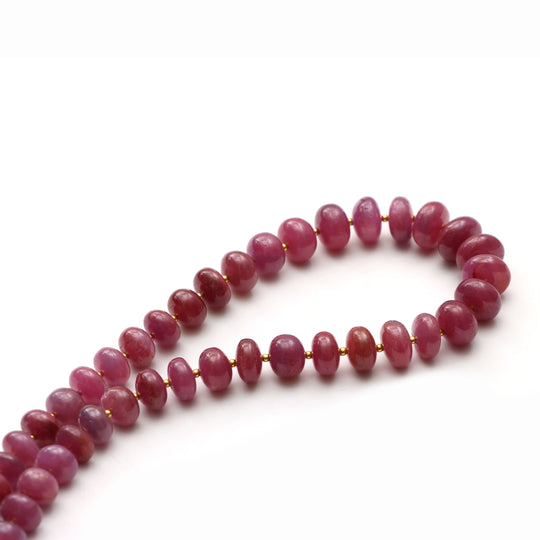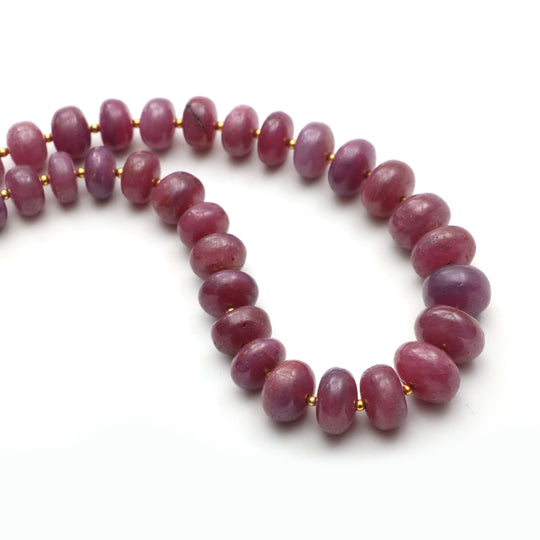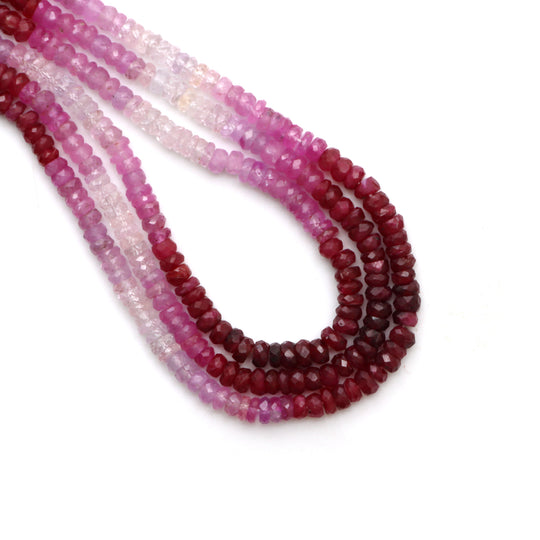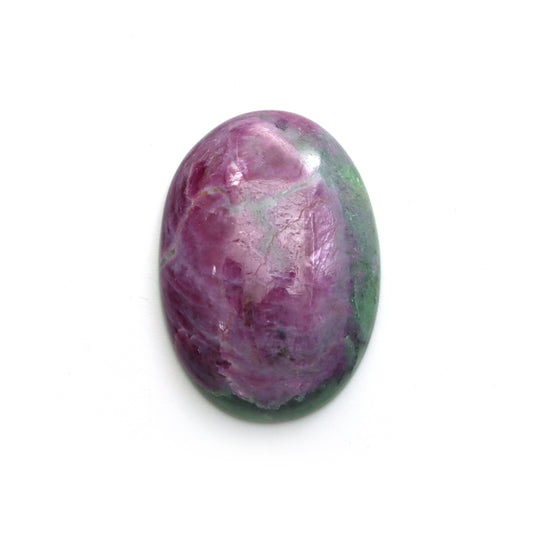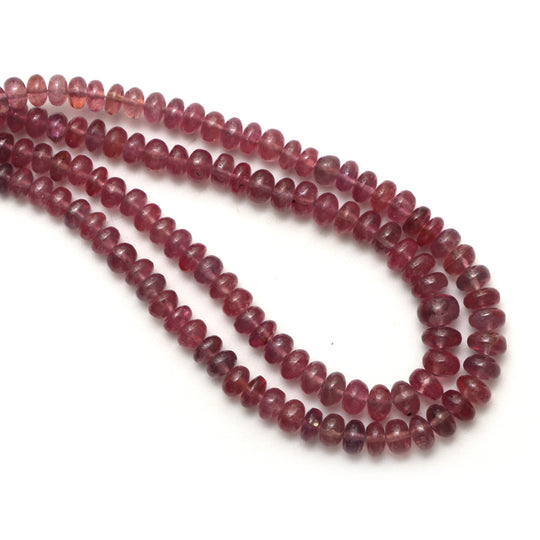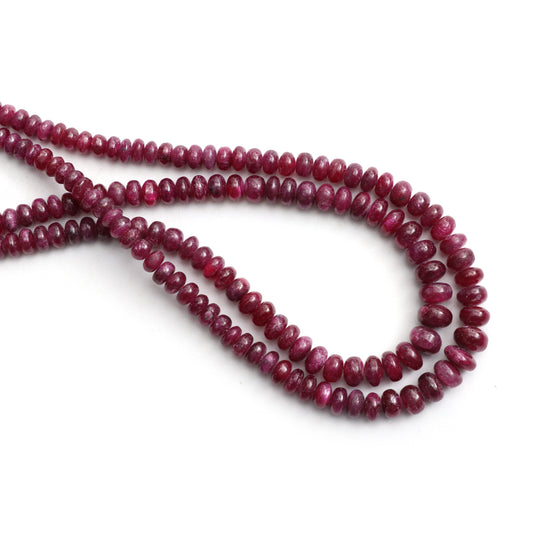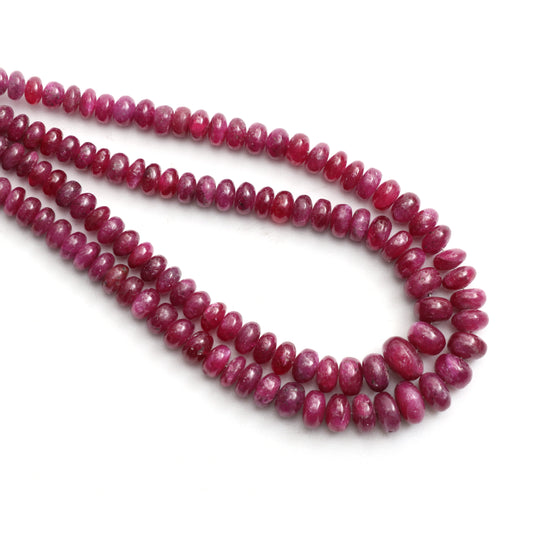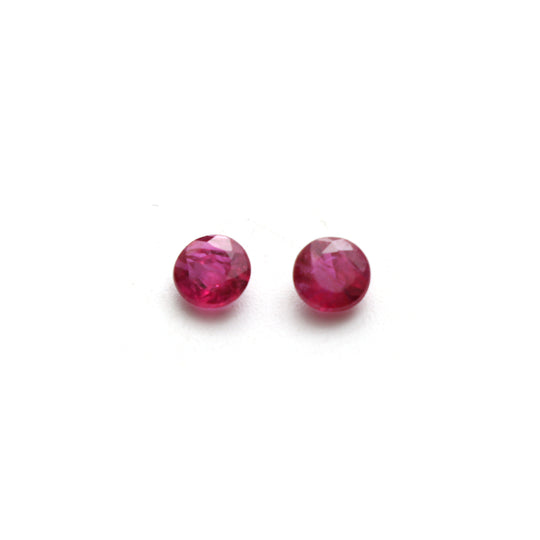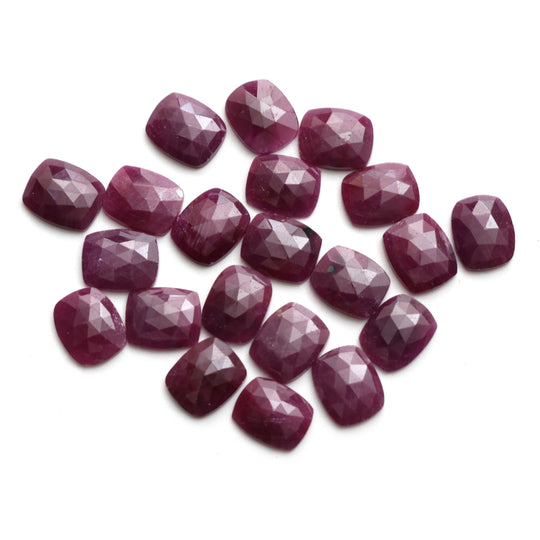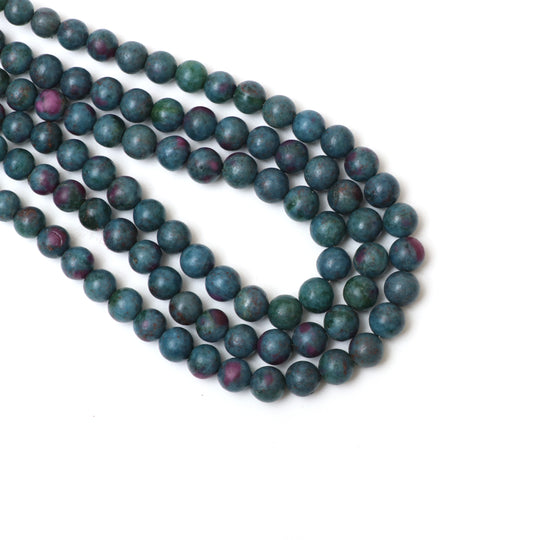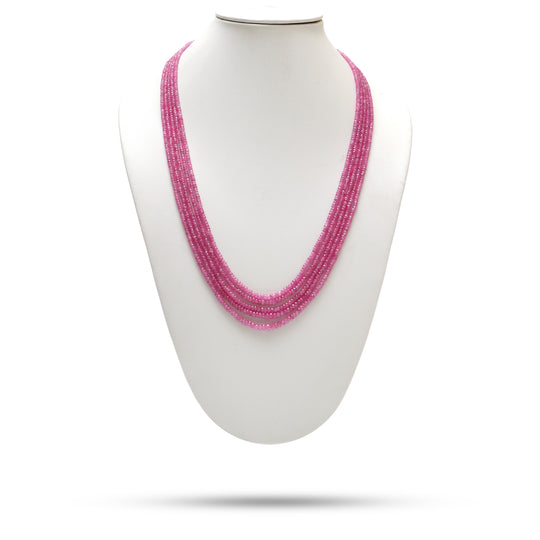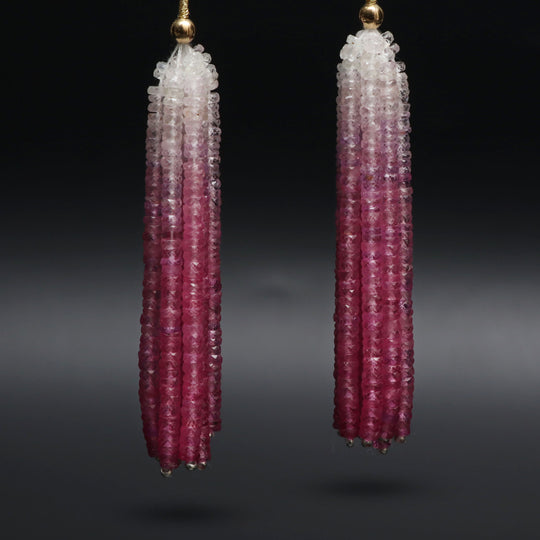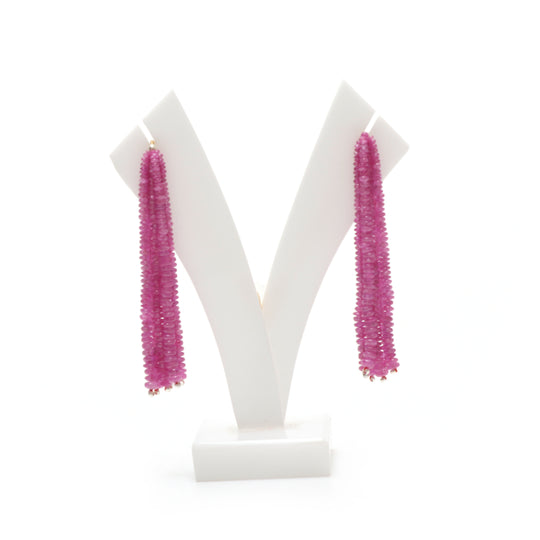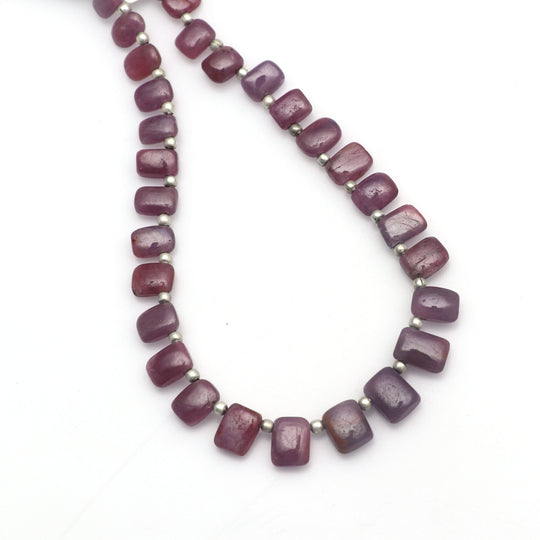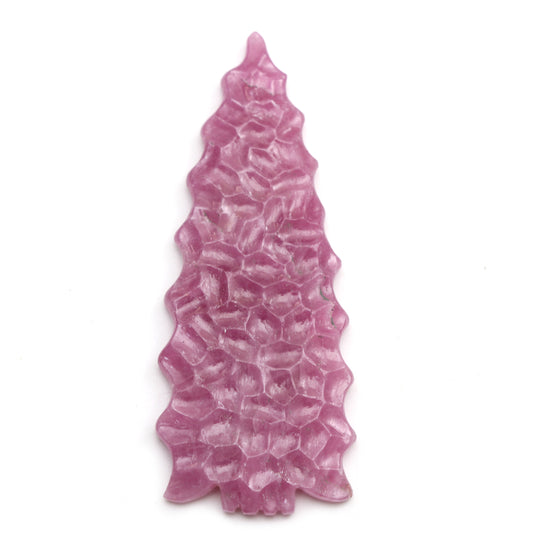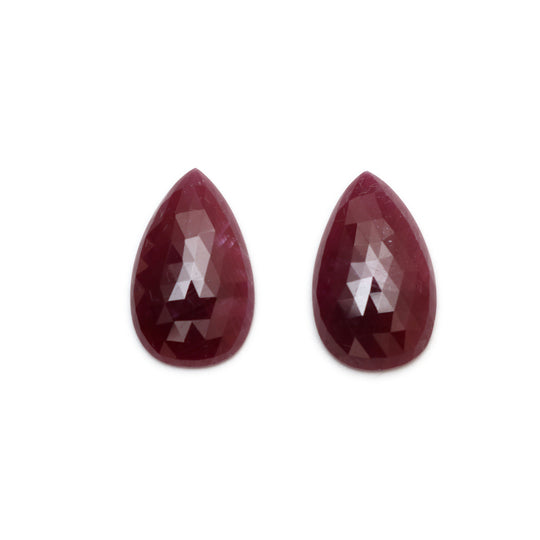Ruby Gemstones
Ruby is one of the most precious forms of the corundum mineral family, which is renowned for both its spectacular look and powerful metaphysical powers. This strong stone, called "the king of gemstones," can make a positive difference in the wearer's life.
It ranges in color from pinkish red to blood red. According to Indian astrology, wearing natural rubies can help you gain authority, improve your relationships, develop your profession, increase authority, promote health, and strengthen relationships with parents.
Most naturally occurring rubies are found in Africa, Burma, and other regions.
Ruby
Ruby
National Facets
$110.00
$118.00
National Facets
$156.00
$168.00
National Facets
$1,031.00
$1,114.00
National Facets
$332.00
$358.00
National Facets
$403.00
$435.00
National Facets
$826.00
$892.00
National Facets
$750.00
$809.00
National Facets
$364.00
$394.00
National Facets
$972.00
$1,049.00
National Facets
$897.00
$969.00
National Facets
$435.00
$470.00
National Facets
$692.00
$747.00
National Facets
$263.00
$284.00
National Facets
$3,410.00
$3,683.00
National Facets
$780.00
$843.00
National Facets
$1,004.00
$1,085.00
National Facets
$819.00
$884.00
National Facets
$912.00
$985.00
- ←
- →
What are ruby gemstones?
Ruby is a type of mineral corundum that ranges in color from pinkish-red to blood-red (aluminum oxide). It is one of the most popular traditional jewelry jewels, as well as being quite strong. Sapphires are the names given to other gem-quality shades of corundum. Ruby is one of the traditional cardinal stones, along with amethyst, sapphire, emerald, and diamond. The Latin word for red, ruber, is the origin of the word ruby. Even though rubies are always red, they can also have orange, pink, or purple undertones.
The color of a ruby is a consequence of the element chromium.
Spinels are some gemstones that are commonly or historically referred to as rubies, such as the Black Prince's Ruby in the British Imperial State Crown. They were once referred to as "Balas rubies." A ruby's quality is defined by its color, cut, and clarity, which also have an impact on its value in addition to the stone's carat weight. Blood-red, or "pigeon blood," the reddest and most precious shade of ruby, fetches a high premium above other stones of comparable quality.
It is the traditional birthstone for July and is often pinker than garnet, though certain rhodolite garnets have a pinkish tint similar to most rubies. The Sunrise Ruby is the most expensive diamond ever offered for sale at auction.
What are ruby gemstones used for?
Rubies are most frequently used in beautiful jewelry. However, rubies, both natural and synthetic, are used in a wide range of products, including watchmaking, medical equipment, and lasers, because of their amazing strength and red fluorescence.
What are the properties of ruby gemstones?
Physical Properties
Ruby's hardness rating on the Mohs scale of mineral hardness is 9.0. Only the natural stones moissanite and diamond are harder; moissanite has a hardness that is halfway between corundum (ruby) and diamond, and diamond has a Mohs hardness of 10. Due to the absence of unpaired electrons or empty energy levels, all of the aluminum ions in pure corundum have a very stable configuration and the crystal is completely colorless as a result. The most stable form of Al2O3, known as "alumina," is present in sapphire, ruby, and pure corundum. In this form, three electrons leave each aluminum ion and join the regular octahedral group of six neighboring O2 ions.
Metaphysical Properties
The benefits of ruby are believed to include prosperity, education, health, and nurture. Enhancements in vitality, focus, creativity, loyalty, honor, and compassion have all been linked to it. Ruby is seen as the guardian of the family, house, and belongings. According to tradition, ruby stimulates the heart chakra and brings spiritual understanding while providing protection against psychic attacks.
Geological Properties
Ruby is a member of the corundum family, along with sapphire. Chromium is responsible for its red hue. The only color variant absent from sapphire is red, which is seen in rubies. Similar to sapphire, major ruby resources have been discovered in Southeast Asia (Burma, now Myanmar, was the primary supplier for centuries), Eastern and Southern Africa, the Middle East, as well as Australia, China, Sri Lanka, Pakistan, and India.
Ruby gemstones have a sticky, dull appearance in their raw state. Their rich red hue is pleochroic, and when they are cut and polished, they have a high shine that is stunning (on par with diamonds). Pleochroic color changes when viewed from different angles.
Zoisite crystal and ruby combine to form ruby in zoisite. Tanzania has been revealed to contain the sole mining reserve. Ruby inclusions in zoisite normally have a green tint, but they can also be pink or red.
In addition, ruby in kyanite, also known as ruby kyanite, is a combination that is mined in Myanmar (Burma), India, and Thailand. Typically, it is pink and crimson with flecks of teal and green.
Along with being used in their natural form, some ruby gemstones are also heated and colored.
Where are ruby gemstones found?
For more than two thousand years, India was thought to be Ruby's country of origin. Recent discoveries of significant Ruby resources have been made in Sri Lanka, Pakistan, and Afghanistan. Myanmar, Thailand, Cambodia, and Vietnam have also long been recognized as sources of high-quality rubies in Southeast Asia.
What color is ruby in gemstones?
Red is the definition of ruby. The other hues of the corundum gem family are referred to as sapphire. Ruby exhibits a wide spectrum of secondary hues, including orange, purple, violet, and pink.
Only a ruby's color can determine how much it costs. The finest rubies can be either bright, pure red, or somewhat purplish red in color.
Reddish-brown or pigeon blood The most sought-after color of rubies commands a high price. The majority of markets value rubies with orange and purple undertones higher than those with simply red overtones.
Where to buy ruby gemstones in the USA?
Visit the National Facets website for the finest quality natural red ruby gemstones and raw ruby gemstones in our wide range of collections that will amaze you. You can buy this ruby gemstone wholesale in a range of colors, like black, blue, pink, and red ruby gemstones. You can make a unique style statement with this alluring rose ruby gemstone.
You can purchase ruby gemstone beads wholesale.
Frequently Asked Questions
Q: Who should not wear ruby gemstones?
A: According to some astrologers, some ascendants like Virgo, Capricorn, Gemini, Libra, and Aquarius shouldn’t be wearing rubies because the Sun feels hostile toward the wearers of their zodiac signs.
Aries, Leo, Scorpio, and Sagittarius zodiac signs are typically seen as being fortunate when wearing rubies. For people born under the Cancer zodiac sign, it has a moderate effect. The zodiac signs of Virgo, Capricorn, and Pisces should refrain from wearing rubies.
Q: How do I activate Ruby before wearing it?
A: Dip the stone in holy water or honey before wearing it to wash away all the bad energy. This step is essential because it fills the stone with positive energy. Burn five incense sticks while wearing them and ask God (the sun) to bless you abundantly.
To activate the ruby stone, recite "Om Hrim Sum Suryay Namah'' 108 times. This is Surya Dev's mantra. Please take note that if you currently wear a red coral, you may wear the ruby gemstone as a pendant or as a ring on your left hand's ring finger.
Q: How do I know ruby will suit me?
A: Ruby is a powerful astrological gem because of its connection to the sun. As a result, it's critical to ensure that the effects of a ruby stone are positive rather than negative.
According to astrology, only people for whom the sun is advantageous should wear ruby, because it is a favorable gemstone. You should consult a reputable astrologer before wearing this stone. For Aries, Leo, Scorpio, and Sagittarius zodiac signs, ruby is widely considered lucky.
Q: Which ruby is best for astrological use?
A: In terms of astrology, it is preferable to have a ruby stone that has not been heated or chemically treated intentionally and is as inclusion-free as possible. Additionally, it is commonly recognized that color affects astrological outcomes. For astrological effects, a transparent, dark-colored ruby stone is thought to be ideal. One such example is the old Burmese ruby or pigeon blood ruby. However, when choosing a ruby for astrological use, clean, authentic, unheated rubies are a crucial prerequisite that should not be compromised.
Q: Can I wear rubies with less carat weight than recommended?
A: Yes! You might be surprised to learn that an excellent quality, genuine ruby of a lower carat can counteract the astrological effects of a larger suggested ruby. To achieve the finest results, it is crucial to make sure the ruby gemstone is outstanding in terms of color and clarity and should be free of inclusions.
Q: Why is there a great variation in ruby prices?
A: Prices for rubies vary greatly depending on their type, origin, color, and clarity. The price of these stones can be significantly impacted by even small changes in any of these variables. Moreover, bigger, inclusion-free rubies become an issue of extreme rarity in valuable gemstones like rubies, which means that the price of a ruby does not always have a significant relationship with its carat size or weight.


